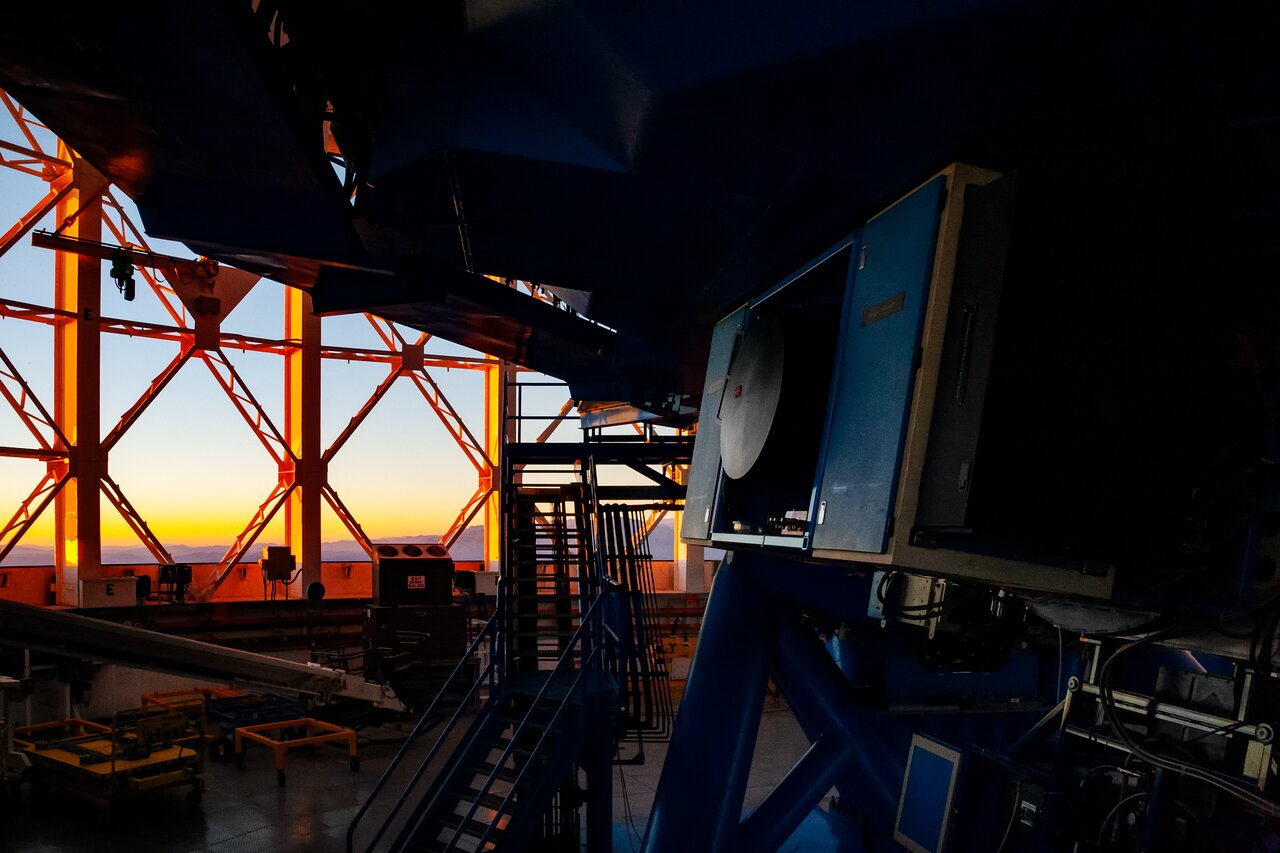Gemini Identifies Free-floating Jupiter Analogue
April 5, 2016

Using the FLAMINGOS-2 spectrometer/imager at Gemini South, astronomers have characterized an especially young, free-floating analogue to Jupiter in our neighborhood (92 light years away). The discovery and Gemini follow-up is published in The Astrophysical Journal Letters (preprint on astro-ph) and described in the Western University press release that follows.
Western-led astronomy team discovers Jupiter analogue among young stars
A team of astronomers from Western University's Centre for Planetary Science and Exploration (CPSX) and the Carnegie Institute of Washington has discovered one of the youngest and brightest free-floating, planet-like objects within relatively close proximity to the Sun.
At an age of only 10 million years, which means its practically a baby in space time, the object identified as 2MASS J1119–1137 is between four and eight times the mass of Jupiter. Using data from NASA's Wide-field Infrared Survey Explorer (WISE) and other ground-based telescopes, 2MASS J1119–1137 was identified by its unique light signature, using a combination of optical and infrared images from large-area surveys of the sky.
"We identified 2MASS J1119–1137 by its highly unusual light signature," explains Kendra Kellogg, a graduate student at Western's Department of Physics and Astronomy and the lead author on the study, which was recently published online and has been accepted for future publication by The Astrophysical Journal Letters. "It emits much more light in the infrared part of the spectrum than it would be expected to if it had already aged and cooled.”
According to Jacqueline Faherty, a Hubble Postdoctoral Fellow and one of the co-authors on the study from Carnegie, the challenge with identifying such rare objects is distinguishing them from a multitude of potential interlopers.
"Much more commonly, distant old and red stars residing in the far corners of our galaxy can display the same characteristics as nearby planet-like objects," says Faherty. "When the light from the distant stars passes through the large expanses of dust in our galaxy on its way to our telescopes, the light gets reddened so these stars can pose as potentially exciting nearby young planet-like objects in our data, when they actually are not that at all."
With knowledge of these common misidentifications, the team immediately checked their findings using the FLAMINGOS-2 spectrograph instrument on the Gemini-South telescope in Chile.
"We promptly confirmed that 2MASS J1119–1137 is in fact a young low-mass object in the solar neighborhood, and not a distant reddened star," says team lead Stanimir Metchev, a Western astrophysics professor.
Next, the team wanted to determine the precise age of this object.
"Our Gemini observations only showed that the object was younger than about 200 million years. If it was much younger, it could actually be a free-floating planet – an analogue of our own Jupiter, yet without a host star," says Metchev.
The final piece of the puzzle was contributed by co-author Jonathan Gagne, a Sagan Postdoctoral Fellow from Carnegie, using one of the most efficient instruments for infrared spectroscopy in existence, the FIRE spectrograph on Carnegie's Baade 6.5 m telescope in Chile.
FIRE allowed the measurement of the line-of-sight velocity of 2MASS J1119–1137 through the Doppler effect of light. Combining this measurement with the sky motion of 2MASS J1119–1137, the team discovered that it belongs to the youngest group of stars in the solar neighborhood. This group contains about two-dozen 10 million years-old stars, all moving together through space, and collectively known as the TW Hydrae association.
"Demonstrating that 2MASS J1119–1137 belongs in the TW Hydrae association, and so is only 10 million years old, inevitably led to the exciting conclusion," says Gagne.
As the team had suspected, 2MASS J1119–1137 is one of the least massive and best free-floating analogues of extrasolar giant planets.
Being nearby, 95 light years away, 2MASS J1119–1137 only narrowly misses the crown for being the brightest free-floating planet analogue. That is held by another object known as PSO J318.5−22, discovered three years ago. However, at an age of 23 million years, PSO J318.5−22 is more than twice the age of 2MASS J1119–1137, and therefore more massive.
"Discovering free-floating planet analogues like 2MASS J1119–1137 and PSO J318.5−22 offers a great opportunity to study the nature of giant planets outside the solar system," concludes Kellogg. "Free-floating planet analogues are much easier to scrutinize than planets orbiting around other stars. Objects like 2MASS J1119–1137 are drifting in space all alone and our observations are not overwhelmed by the brightness of a host star next-door. If we can understand these free-floating planet analogues, we can readily apply that knowledge to exoplanets."
